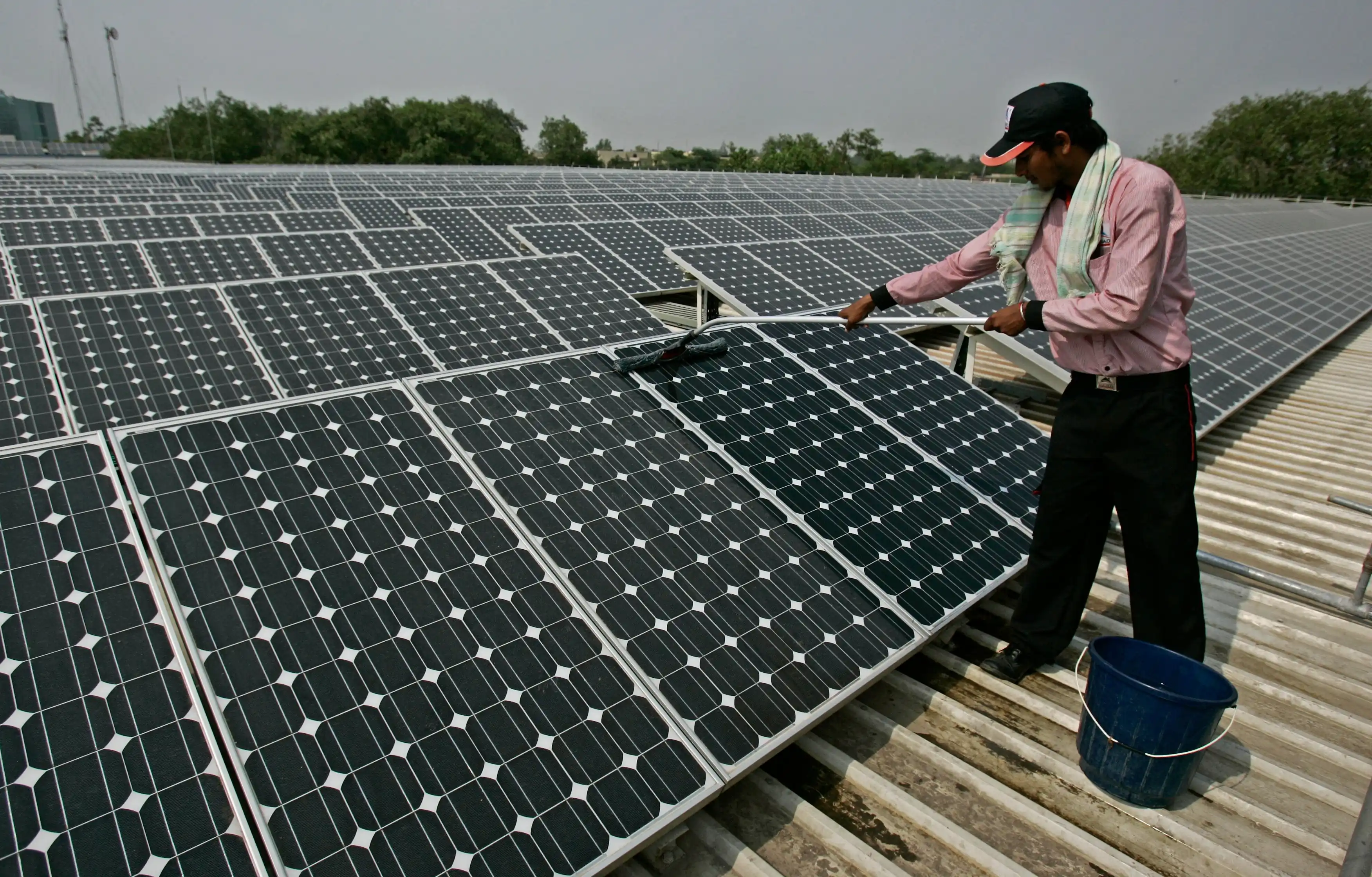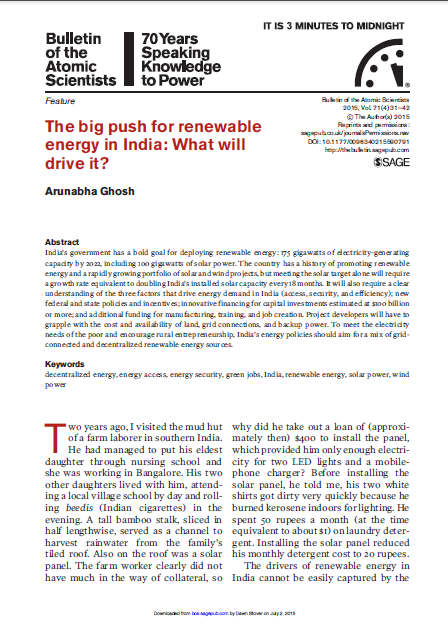Paper
The Big Push for Renewable Energy in India
What will drive it?
Arunabha Ghosh
July 2015 | Energy Transitions
Suggested citation: Ghosh, Arunabha. 2015. “The big push for renewable energy in India: What will drive it?” Bulletin of the Atomic Scientists,. 71(4), 31–42. https://doi.org/10.1177/009634021559079
Overview
This paper provides an overview of the renewable energy sector with a clear understanding of the three factors that drive energy demand in India - access, security and efficiency. It discusses various strategies that have been planned by the Indian government to encourage the use of renewable energy. Further, it highlights various policy imperatives such as government incentives, preferential tax-treatment, and policy innovations to encourage renewable energy deployment.

Key Highlights
- In 2015, coal provided 62 per cent of electric-power capacity. Gas-based power capacity was 9 per cent, hydropower was 15 per cent and nuclear power was 2 per cent of the total capacity.
- About 20 per cent of India’s electricity could come from renewable sources by 2020, and it could rise to 30 per cent by 2030.
- Despite rising incomes, less than half of urban households and only 6 percent of rural households exclusively use liquefied petroleum gas (LPG) for cooking.
- About 80 per cent of rural Indian households use traditional fuels such as firewood, dung cake, coal, and charcoal because of affordability, access, and awareness limitations.
- If 15 per cent of irrigation pumps in India are converted to solar, they would amount to 20 GW of additional capacity.
- Government incentives include direct financial transfers such as feed-in tariffs, generation-based incentives, and low-cost financing and viability gap funding to subsidise capital costs.
- The solar market created nearly 24,000 full time-equivalent jobs from 2011 to 2014 in business development, design and construction, commissioning, and operations and maintenance
- Several state governments have pushed for policy innovations, such as accelerated depreciation in Gujarat, exemptions from wheeling and transmission charges for electricity sold in Andhra Pradesh, and a renewable energy infrastructure development fund in Rajasthan.
Key Recommendations
- Incorporate new federal and state policies, incentives and innovative financing for capital investments estimated at $ 100 billion and more.
- Leverage a clearer understanding of consumer needs and behaviors to offer appropriate renewable solutions. This should be done by project developers, service providers, and investors.
- Promote and disseminate information on renewable energy through a dedicated e-portal and document the project information and its performance.
- Push for policy innovations to encourage renewable energy deployment in India.
- Create collaboration between various stakeholders such as government, training centers and companies to form necessary human capital. Enhance the interface between research agencies and on the ground implementation companies.
About 20 per cent of India’s electricity could come from renewable sources by 2020, and it could rise to 30 per cent by 2030.








